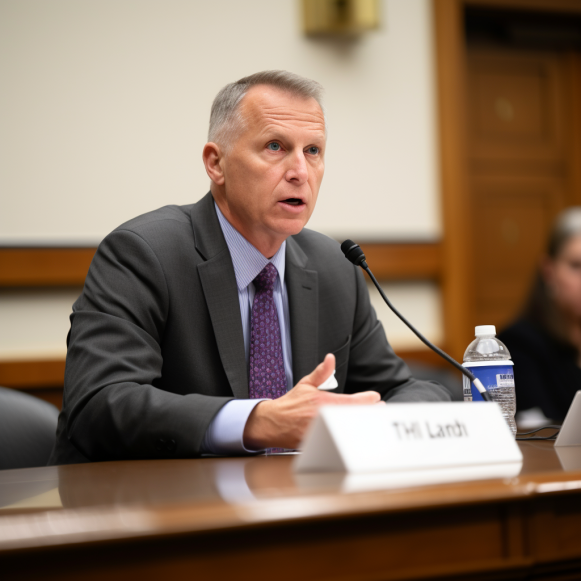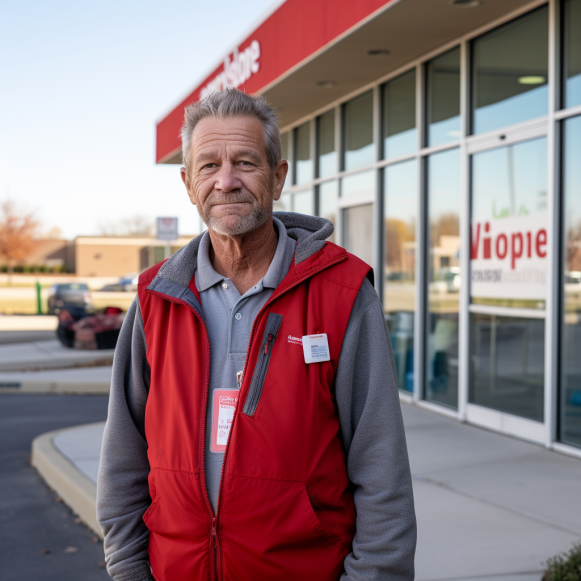How will rural Americans fare during Medicaid unwinding? Experts fear they’re on their own

Rural Medicaid recipients face additional barriers to renewing coverage.
Abby Madore covers a lot of ground at work every day.
Madore works as a community health center employee in Carson City, Nevada, where she helps low-income residents understand their health insurance options, including Medicaid. Her phone is always ringing, she says, as she receives calls from clients in the state’s far reaches seeking assistance.
It’s a big job, especially this year as states work to clean up their Medicaid rolls following the end of a pandemic-era freeze that prohibited disenrollment.
A few dozen specialists work for seven navigator organizations, which are tasked with assisting Nevadans in enrolling in or maintaining their coverage. Madore said she mostly works with people in rural Nevada, which spans more than 90,000 square miles.
According to Katie Charleson, communications officer for Nevada’s state health marketplace, reaching people in rural areas is always difficult. According to experts, this problem is not unique to the state and is raising concerns that limited resources will put rural Americans at risk as the Medicaid unwinding continues.
According to recent data submitted to the Centers for Medicare & Medicaid Services, 72% of people who have lost Medicaid coverage since states began the unwinding process this year were disenrolled for procedural reasons rather than because officials determined they were no longer eligible for the joint state-federal health insurance program.
By late August, federal officials had directed state Medicaid administrators to halt some procedural disenrollments and re-enroll some recipients whose coverage had been terminated.
According to experts, these procedural disenrollments may disproportionately affect rural residents.
According to a recent brief published by researchers at the Georgetown University Center for Children and Families, rural Medicaid recipients face additional barriers to renewing coverage, such as longer distances to eligibility offices and less internet access.
In small towns and rural areas, Medicaid and CHIP, the Children’s Health Insurance Program, covered 47% of children and 18% of adults, respectively, compared to 40% of children and 15% of adults in metropolitan counties.
“As our research shows, rural communities rely on Medicaid to form the backbone of their health care system for children and families,” said Joan Alker, executive director of the Center for Children and Families and research professor at Georgetown’s McCourt School of Public Policy. “So if states bungle unwinding, this is going to impact rural communities, which are already struggling to keep enough providers around and keep their hospitals.”
A lack of navigators in rural areas to assist Medicaid enrollees in keeping their coverage or finding other insurance if they are no longer eligible may exacerbate the difficulties faced by rural residents.Navigators assist consumers in determining eligibility for Medicaid or CHIP, coverage for children whose families earn too much to qualify for Medicaid, and in enrolling. If their clients do not qualify for these programs, navigators assist them in enrolling in marketplace plans.
Navigators work independently of Nevada’s more than 200 call center employees who assist residents with managing social service benefits.
The federal government requires navigators to provide their services at no cost to consumers and to provide unbiased advice, distinguishing them from insurance broker agents who earn commissions on certain health plans. There would be no free service guiding consumers through the process of shopping for health insurance and understanding whether their health plans cover key services such as preventive care without them.
According to Charleson, approximately 30 to 40 certified enrollment counselors, such as Madore, work at navigator organizations, assisting consumers in enrolling in plans through Nevada Health Link, the state health marketplace that sells Affordable Care Act plans. One of these organizations is based in Carson City, a small capital city 30 miles south of Reno with a population of less than 60,000 people. The rest are concentrated in Reno and Las Vegas.
The availability of navigators and their outreach strategies varies by state.
Six navigators work in Montana, which is larger than Nevada but has one-third the population. They serve the entire state, reaching out to Medicaid beneficiaries and people seeking assistance with coverage over the phone or in person by traveling to outlying communities. According to Olivia Riutta, director of population health for the Montana Primary Care Association, a navigator in Billings, Montana, has worked with the Crow and Northern Cheyenne Tribes, whose reservations are relatively close by. However, officials are having difficulty reaching Fort Peck Reservation in northeastern Montana.
Having navigators in rural communities to assist people in person is a continuing challenge for the country, according to Alker. However, the changing circumstances highlight the importance of navigators in guiding people through complex insurance processes, she says.
This was revealed by a recent survey of what consumers encounter when searching for health insurance on Google on their own. “The results are really concerning,” said survey co-author JoAnn Volk, a research professor and the founder and co-director of Georgetown University’s Center on Health Insurance Reforms.
The researchers discovered that former Medicaid enrollees looking for private-sector health plans face aggressive, deceptive marketing of limited-benefit products that do not cover important services and do not protect consumers from high health-care costs.
Researchers shopped for coverage on the ACA marketplace using two profiles of consumers who were losing Medicaid coverage and were eligible for a plan with no premiums or deductibles.
However, the team reported that none of the 20 sales representatives who responded to their inquiries mentioned the plan, and more than half pushed the limited-benefit products. The representatives also made false and misleading statements about the plans they were promoting and misrepresented the marketplace plans’ availability or affordability.
Volk stated that sales representatives and brokers quoted limited plans ranging from $200 to $300 per month. Such a cost may be unaffordable for consumers who are low-income despite being ineligible for Medicaid.
“If they can’t get to a navigator, I would not trust that they would get to their best coverage option in the marketplace, or to the marketplace at all, frankly,” Volk stated.
The federal government does not require states to break down Medicaid disenrollment data by county, making it more difficult for experts and researchers to track and differentiate rural and urban concerns. The Center for Children and Families does so using Census Bureau data, which, according to Alker, will not be available until next fall.
Call center statistics, according to Alker, will be important to monitor as states continue the redetermination process. Rural residents rely more heavily on this method of renewing coverage.
“Call abandonment rate” is one example. It is defined by CMS as the percentage of calls dropped from the queue in two separate measures: calls dropped up to and including 60 seconds and calls dropped after 60 seconds. The agency informed the Nevada Department of Health and Human Services of its rate in August: In May, the first month after Nevada’s unwinding began, an average of 56% of calls were dropped.
It “has concerns that your average call center wait time and abandonment rate are impeding equitable access to assistance and the ability for people to apply for or renew Medicaid and CHIP coverage by phone and may indicate non-compliance with federal requirements,” stated Anne Marie Costello, deputy director of CMS.
Costello also mentioned in the letter the 45% of Medicaid enrollees whose coverage was terminated for procedural reasons in May.
The letters were sent to all 50 states, but only Idaho, South Carolina, Texas, and Utah had higher disenrollment rates than Nevada, and no state had a higher rate of call abandonment.
The Nevada Division of Welfare and Supportive Services’ call center, staffed by 277 family service specialists, receives more than 200,000 calls per month, according to officials. According to a spokesperson, the phone system provides self-service options in which customers can follow prompts to obtain information about their Medicaid renewal date and benefit amounts. Because those calls aren’t handled by a case manager, they’re considered “abandoned,” according to the spokesperson, raising the rate despite the fact that callers’ questions may have been fully answered.
People looking for coverage after a lapse may panic, according to Madore, and the best part of her job is providing relief by assisting them in understanding their options following disenrollment from Medicaid or CHIP.
People are surprised to learn about the variety of free services navigators like Madore provide, she says.
“They’re unaware of how much support we can provide,” Madore stated. “I’ve had people call me back and say, ‘It’s my first time using insurance,'” she says. ‘Where should I go for urgent care?'”





